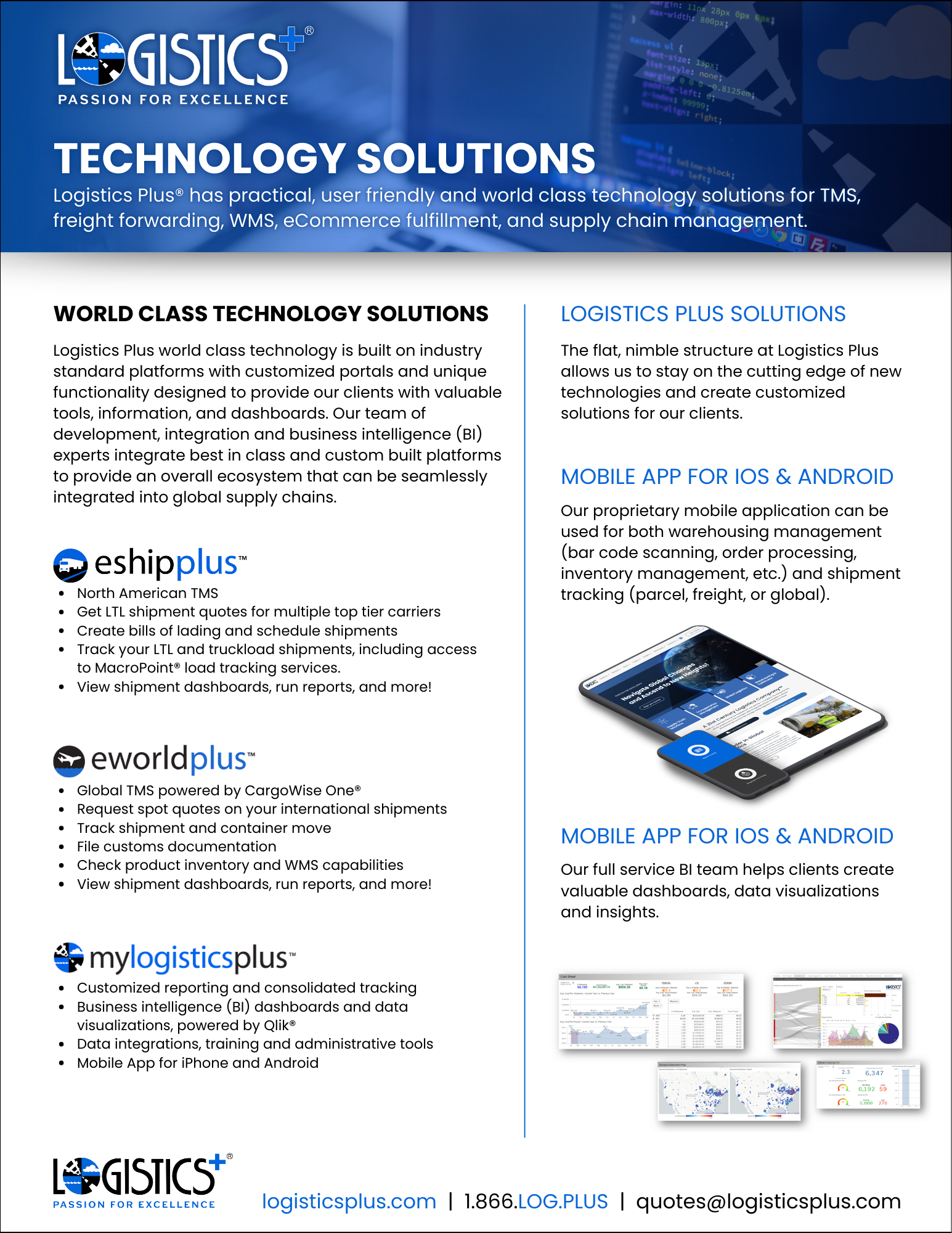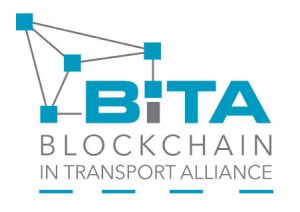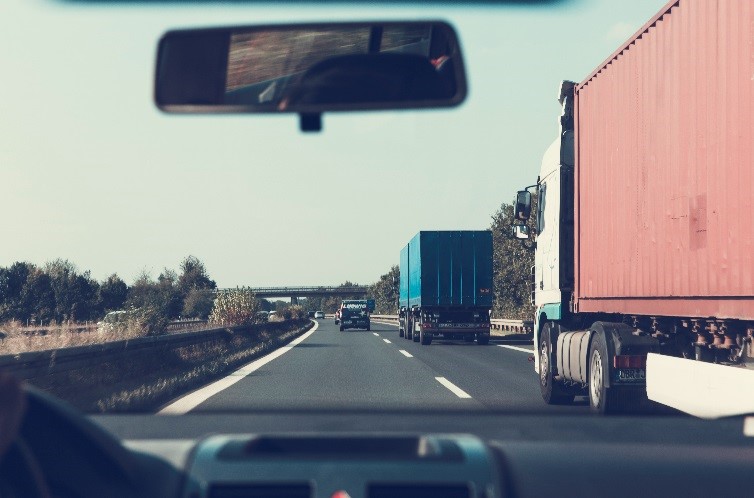
by logisticsplus | May 15, 2018 | News
Logistics Plus CIO, Emile Zafirov, was recently interviewed by the Erie Times-News for a small feature in an upcoming edition of its Lake Erie Lifestyle magazine. Here is a full transcript of that interview.
*************************************************************
 How has technology changed LP’s capabilities in the last 5, 10 years?
How has technology changed LP’s capabilities in the last 5, 10 years?
“Technology has become a major differentiator in our industry. So much so, you can say it’s a blurred line between logistics and technology services that we offer. There were several routes our company could have taken seven-eight years ago: stick to core logistics and transportation services, have some basic tech, and compete on price; or, follow a more daring approach by branching out into newer, higher-tech territories and taking on any good challenge that comes our way. We took the latter route. We’ve since faced projects that many other companies would have turned down as too risky, out of their competences, or plain impossible. It takes many things to do it successfully, but two stand out – the ‘art’ and ‘science’ of success for us, if you will. First and foremost – the art – is the spirit of the company, which starts with the CEO of the company, and infects pretty much everyone: the ‘can do’ attitude, ‘don’t be afraid to try something, even if it doesn’t succeed at first’, and ‘care for what you do’ (or as Jim sometimes says, ‘give a s***’ ?). This creates a unique environment that cultivates the right people for the journey. The second – or the science – is much more pragmatic: technology. Heavy focus on technology. We built, acquired and integrated a set of tools into a solid platform that matches the nature and spirit of the company and allows us to be flexible and able to take on the wide variety of projects we do at over two dozens of markets on six continents. During that eight year period, the number of employees in the company grew three times. As a comparison, the size of the IT team grew five times and the BI (Business Intelligence) and Analytics team grew five times just in the last two years.”
 Can you give me some “real” examples of transportation solutions that your team has devised that is directly related to technology that you didn’t have just 5 or 10 years ago?
Can you give me some “real” examples of transportation solutions that your team has devised that is directly related to technology that you didn’t have just 5 or 10 years ago?
“What do you do when your WMS (Warehouse Management System) for a global, high-velocity project, resides in the U.S. and the locations it’s being used from in the field sometimes have no internet access available or the performance is too slow for the high pace of the work? You design your offline mobile application that talks to a local server when it can reach it, which in-turn talks to our cloud servers when it needs to. We could have spent a ton of money on optimizing connections or buying expensive equipment – but we found a better way. Another example are logistics control towers – heavily reliant on visibility into what’s happening in a supply chain and timely input of accurate data. We’ve been doing that for years on some scale but we have become really good at it. Today, with assistance and timely data input by our network of people around the globe, working off the same global logistics platform, we are running global projects out of Erie, PA for some of largest, fastest growing and most demanding companies in the world. Check the website if you’re curious which. “
- What does the future look like? How do you see technology changing the industry in the next decade? What will stay the same?
“The next decade will be very rich with changes. There is a critical mass of knowledge and technology being accumulated as we speak which will result in a much different picture of the industry in the very near future. Quantitative accumulations leading to qualitative transformations. From robotics in warehousing, to drones, to autonomous vehicles and autonomous vessels, to the expansion of e-commerce and crowd-sourcing/Uberisation of last mile delivery of goods to consumers (“would you like us to leave your package in your trunk, or drop it on your balcony on the 17th floor, ma’am?”). What will stay the same is human ingenuity and the constant drive to push the envelope a little further. And that people who care and put their heart in what they do will always do well, and will have even more fun while doing it.”
- Why is it important for companies to have their own technology teams that go beyond fixing computers? What does your BI team do exactly?
“There are many examples of companies outsourcing their technology work and being happy with the results. They ask for something, spec it out, communicate it, and the partner produces it. In a company like ours, where speed, flexibility and resourcefulness are key, IT is logistics, and vice versa. The blurring of the line I mentioned earlier. We are providing one service to the customer that can hardly be split into its components. Sometimes a project starts with the data that the customer wants to see delivered to their system. Then we work our way back to how to produce, where and how we need to plug into the customer’s supply chain and what services we need to provide for them. The only way I know to do that is for the technology team to be an integral part of the company and services it provides. The BI (Business Intelligence) team was sitting with our Truckload team the week before last; they attended a predictive analytics and forecasting workshop in Florida this last week; and they will be sitting with the International Air Freight team next week to figure out some key indicators they can put on a dashboard for the operations managers to look at to better manage their fast moving, multi-legged shipments. Also last week, they delivered a nice report with recommendations on how a customer can change their ordering pace in order to keep less inventory in our warehouses, product by product.”
- How much does technology affect your everyday work?
“Very much. If you sit with us at a sales meeting with a prospective customer, at the LP side of the table you may now see a warehousing specialist, a WMS technology specialist, a development and integrations specialist, and a business intelligence and analytics specialist; but this is still a logistics service Logistics Plus is providing. ?”


by Marketing | Apr 10, 2018 | News

The primary goal of technology innovation is to make tasks less costly and more efficient. This is particularly the case in the logistics field, where capacity is short, labor is scarce, and customer demands more stringent than ever before. There have already been huge improvements made in the logistics industry and things will only progress as modernization continues to evolve. Here is a quick look at 6 technology trends for 2018 and beyond, the roles they play in logistics, and how they may shape the future.
Trends for 2018 and Beyond
1. Robotics & Automation
Forklifts have been a vital component to warehouses for decades, and we’re now seeing a shift toward programming this share of the supply chain. The primary goal is improved efficiency. Amazon is a leading example in this space, thanks to its acquisition of Kiva Systems, now known as Amazon Robotics. As Amazon and other companies have shown, implementing robotics and autonomous machinery into the fold can condense delivery times to just a 24 to 48-hour period. Autonomous forklifts and robots can pick products much sooner than humans, which means companies don’t have to pay human forklift operators. The combination of lower costs and a speedier assembly is a dream come true for any business owner.
2. Safety and Cybersecurity
Safety and logistics will also be on the radar in 2018. Recent hacks into national companies have exposed potential cybersecurity threats throughout some of the most protected organizations on the globe. As a result, logistics providers will be concentrating more on safety. Amplified demand for faster turnaround will also have an inevitable result of increasing the risk of accidents in transportation operations. Workers are going to be functioning quicker, and doing things faster tends to result in less-than-safe practice. National governing agencies also recognize that logistics companies will be doing overtime in 2018, so it is more likely that they will pass protocols sooner rather than later. This will require the use of more innovative analytics to monitor employee performance and obey safety standards.
3. Mobile Apps
The growth of new technologies and the Internet of Things (IoT) will promote logistics service providers and shippers to increase adoption of mobile apps. These types of apps exist for inventory management, barcode scanning, fleet management, shipment tracking, order management, customer service and more. Logistics businesses can pull information and capabilities via an app to manage capacity and satisfy demand. Freight sharing apps are one of the prime app groupings that will see a significant boost throughout 2018.
4. Transportation Management Systems
The adoption and implementation of transportation management systems (TMS) is anticipated to climb in 2018 and beyond. A TMS has the value of being a “hub” for all logistics communications and processes, including route scheduling and optimization, freight auditing and payment processing, carrier management and more. Furthermore, TMS applications have shifted from terminal-based installs to cloud-based platforms, reducing postponements in implementation, removing bottlenecks from downtime and refining cybersecurity simultaneously. As a result, more companies will adopt such solutions throughout the year to keep up with growing demand and to integrate into the amplified use of the other logistics technology trends.
5. Artificial Intelligence
The potential to utilize Artificial Intelligence (AI) to improve decision-making, transform business models and networks, and modify the customer experience will drive the payoff for digital enterprises. A recent industry survey indicated that 59% of establishments are still assembling data to shape their AI tactics, while the rest have already made advancements in directing or implementing AI solutions. While using artificial intelligence appropriately will result in a great digital business reward, the promise of general AI to perform any intellectual duty that a human can do, and vigorously absorb and comprehend as much as humans, is uncertain.
6. Blockchain Technology
Blockchain is a public, dispersed, and decentralized archive that eliminates business friction by being autonomous of individual applications or contributors. The technology has the promise to transform industries, including the government, healthcare, content dispersal, supply chain and more. An applied approach to blockchain requires a clear understanding of the business opportunity, the draw backs, a dependable architecture, and a solid implementation strategy. BiTA (Blockchain in Transport Technology) is an organization that is leading the charge to help develop and set standards for blockchain technology within the transportation industry.
If you’re looking for world-class technology solutions, look no further than Logistics Plus. Our technology is built on industry-standard platforms with customized portals and unique functionality designed to provide our clients with valuable tools, information, and dashboards. Our team of development, integration and business intelligence (BI) experts integrate best-in-class and custom-built platforms to provide an overall ecosystem that can be seamlessly integrated into global supply chains.


by Marketing | Jan 30, 2018 | News
 What is Blockchain Technology?
What is Blockchain Technology?
Blockchain is an emerging technology that allows for the decentralization of data as well as making that data unalterable. A simple way to view blockchain is as a decentralized digital ledger of transactions. It is most famously known as the accounting method for the cryptocurrency, Bitcoin; but blockchain’s potential expands well beyond the current hype of cryptocurrencies.
The main characteristics of blockchain include being 1) decentralized, 2) verifiable, and 3) unalterable. These characteristics are viewed as having many advantages within the logistics industry. Transparency and trust between parties can be achieved by providing the same verified data to all members on the network. Blockchain technology has the promise of decreasing costs as middlemen are eliminated and antiquated systems are replaced with systems of higher efficiency.
Change in Logistics
Blockchain technology has the potential to greatly benefit supply chain management. Examples include:
- Improved traceability and trackability
- Elimination of middlemen, which cuts costs, reduces paperwork, and shortens the supply chain
- Reduction in the cost of regulations and compliance
- Increased transparency of price, ownership, and the entire process
- Accelerated payment, better security, and reduction of fraud
- Simplified claims settlement
Another major advantage will be connectivity through IoT (the internet of things) where physical means of measurement, control and tracking can supply data and information. Blockchain technology will make sure this information is verified, distributed, and hacker-free. Major companies, such as UPS and Walmart, are starting to realize these advantages, and new organizations to implement uniform standards have started to develop. One of the most important is BiTA, the Blockchain in Transport Alliance. It is composed of companies ranging from truckers, freight consolidators, logistics firms (including Logistics Plus) as well as software and information technology firms. Recently, BiTA announced that it would use open standards to encourage adoption and usage.
In preparing for blockchain, BiTA cites the following many use cases:
- Performance History – Performance history through the blockchain framework can allow parties to see solid and definitive evidence of past performance in all the relevant metrics. This removes the “trust” aspect from all deals
- Vehicle Maintenance – Blockchain allows for the item by item records of vehicle repairs. Instead of one person holding an extensive repair history, it is held within the blockchain. The history can now effectively move with the equipment for anyone to see.
- Quality Assurance – Thanks to the distributed nature of blockchain, everyone involved in the transaction has access to all points. Taking photos and evaluating freight at pick-up and delivery locations reduce the likelihood of unsubstantiated disputes.
- Compliance – Blockchain and ELDs are a natural pair. ELDs can send a near endless stream of data to the blockchain in real-time. Pairing this information with traffic data, weather data, etc. allows for up to the minute rerouting.
- Capacity Monitoring – In trucking, available capacity can change throughout the day. The blockchain can provide the necessary transparency to know when and where capacity opens up, allowing participants to take advantage of shifts in demand.
- Payments and Pricing – Payment processing and settlement is all secure on the blockchain, and transaction information is easily accessible. By keeping detailed historic payment records, people can use more data than ever to determine rates.
- Fraud Detection – Every transaction that takes place on the blockchain is visible to everyone on the network, and nothing can be removed. This transparency removes many points where fraud occurs and eliminates double brokering.
- Theft Prevention – The blockchain can contain detailed information and rules. These can even include ID pictures and rules for the pick-up and delivery of the freight, increasing security and reducing the possibility of theft.
Blockchain isn’t just an industry disruptor, it’s the technology that will revolutionize the way people do business. As blockchain and IoT converge, the result will be that the transportation and logistics industry may never be the same.


by logisticsplus | Jan 30, 2018 | News
FOR IMMEDIATE RELEASE
Logistics Plus Joins Blockchain in Transport Alliance (BiTA)
Logistics Plus and BiTA Look to Develop Blockchain Standards and Education within the Transportation Industry
 ERIE, PA (January 30, 2018) – Logistics Plus Inc., a leading worldwide provider of transportation, logistics and supply chain solutions, is proud to announce that it has joined the Blockchain In Transport Alliance (BiTA) to help develop and set standards for blockchain technology within the transportation industry.
ERIE, PA (January 30, 2018) – Logistics Plus Inc., a leading worldwide provider of transportation, logistics and supply chain solutions, is proud to announce that it has joined the Blockchain In Transport Alliance (BiTA) to help develop and set standards for blockchain technology within the transportation industry.
A blockchain is a digital and decentralized ledger that is maintained across a network of computers and protected through encryption. Its transparency and incorruptibility helps facilitate transactions and agreements between different parties. Blockchain technology can bring added visibility, traceability, and security to global supply chains.
All companies within BiTA share a unified mission of developing a standards framework, educating the market on blockchain applications, and encouraging the use of said applications through exemplary implementation. In addition to establishing market standards, BiTA is focused on engaging with the industry and providing educational resources to ensure the full potential of the benefits of blockchain technology is carried through.
“BiTA is the standards creation, education and industry leadership organization in the area of blockchain within the transportation industry,” said Emile Zafirov, CIO for Logistics Plus. “By joining BiTA, Logistics Plus is among the early proponents and, potentially, adopters of blockchain technology and the benefits it brings for transportation and supply chains.”
About BiTA
The Blockchain in Transport Alliance (or BiTA) is a consortium of the foremost leaders in the trucking industry forging a path towards industry standards in blockchain use. All companies within BiTA share a unified mission of developing a standards framework, educating the market on blockchain applications, and encouraging the use of said applications through exemplary implementation. Learn more at bita.studio.
About Logistics Plus Inc.
Logistics Plus Inc. provides freight transportation, warehousing, fulfillment, global logistics, and supply chain management solutions through a worldwide network of talented and caring professionals. Founded in Erie, PA by local entrepreneur, Jim Berlin, 21 years ago, Logistics Plus is a fast-growing and award-winning transportation and logistics company. With a strong passion for excellence, its 450+ employees put the “Plus” in logistics by doing the big things properly, and the countless little things, that together ensure complete customer satisfaction and success.
The Logistics Plus® network includes offices located in Erie, PA; Alma, AR; Little Rock, AR; Los Angeles, CA; Riverside, CA; San Francisco, CA; Visalia, CA; Atlanta, GA; Chicago, IL; Detroit, MI; Kansas City, MO; Charlotte, NC; Lexington, NC; Buffalo, NY; Olean, NY; Cleveland, OH; Charleston, SC; Greenville, SC; Nashville, TN; Dallas, TX; Fort Worth, TX; Houston, TX; Laredo, TX; Winchester, VA; Madison, WI; Australia; Bahrain; Belgium; Canada; Chile; China; Colombia; Egypt; France; Germany; Hong Kong; India; Indonesia; Kazakhstan; Kenya; Libya; Mexico; Poland; Saudi Arabia; Singapore; South Sudan; Taiwan; Turkey; UAE; and Uganda; with additional agents around the world. For more information, visit www.logisticsplus.com or follow @LogisticsPlus on Twitter.
Media Contact:
Scott G. Frederick
Vice President, Marketing
Logistics Plus Inc.
(814) 240-6881
scott.frederick@logisticsplus.com
Click image below to download the Logistics Plus logo:


by Marketing | Jan 24, 2018 | News

What are ELD’s?
For anyone not familiar with the term, ELD is short for electronic logging device. This tool is used to document a driver’s Record of Duty Status (RODS). Before ELD’s came about, drivers had to manually enter their hours of service into a paper logbook. Although some individuals still utilize this method, ELD’s were created with the intent to be easily accessible, organized and a fast way to track, manage, and share RODS information. The device is able to connect with a truck’s engine, which transfers driving time directly to the ELD, making it easier and accurate for drivers when having to log their hours of service requirements.
The ELD Mandate
About six years ago, in 2012, the U.S. Congress passed the MAP-21 bill, otherwise known as “Moving Ahead for Progress in the 21st Century.” This law requires drivers to have an ELD installed in their vehicle, replacing the previous manual logging method. The mandate was put into action in December of 2017, but drivers have until April of 2018 before the FMCSA (Federal Motor Carrier Safety Administration) requires them (inspectors will issue citations before April 1; after that date, out-of-service orders will be given to truckers that are non-compliant).
Impact on Truck Capacity
The new ELD Mandate has raised issues concerning trucking capacity and much more. Although truck operators have known about this for a while, many have yet to install the electronic tracking device or find an authorized vendor, not to mention it is a lengthy process.
Based on FMCSA guidelines, the HOS rules are as follows:
- Truckers have an 11-hour driving limit (only holds true if the driver has 10 consecutive hours off duty)
- Drivers have a 14-hour absolute driving limit for driving after coming on duty (following 10 consecutive hours of off-duty)
- Drivers must take breaks (may only drive if 8 hours or less have passed since the end of the drivers last off-duty)
- Specification of how many hours a driver may work within an 8-day period
- No more than 60 hours when driving 7 consecutive days in the same period
- No more than 70 hours when driving 8 consecutive days in the same period
- Restarts when the driver takes 34 + hours off duty
These new regulations hold strict limitations on the number of trips and hours drivers can complete in a given time frame. They also have drivers questioning what this means in terms of trucking capacity. Will truck drivers be able to fulfill their daily driving schedule? Will this decrease a carrier’s or operator’s profitability? As truckers are faced with increased costs and limited driving time, how much of these increased costs will be passed on to shippers?
Many media outlets are already reporting significant capacity constraints and rate increases across both the truckload and LTL segments. In fact, some truckload freight may be shifting to LTL in certain lanes as capacity has tightened and as truckload spot-market rates have increased. The TIA’s (Transportation Intermediary Association) data is also showing the impact of rising spot market truckload rates, which grew by double-digits year over year in the fourth quarter of 2017.
Although 3PLs are not immune to rate increases and capacity crunches, they are often in a better position to help customers find affordable solutions through their effective use of technology and their expansive carrier relationships.
There is no doubt that the ELD mandate will cause less trucking capacity, but in the long term, it will increase efficiency and productivity for users who implement it. Since the large fleet operators have implemented ELD’s years ago, they have an advantage over the smaller fleet and independent operators who have delayed ELD implementation. However, Logistics Plus is accomplished in finding the best logistic solutions to a shipper’s needs.
ELDs, new visibility tools, and automated enhancements will continue to change the transportation and logistics industry on every front. As costs are permanently reduced and efficiencies realized, the trucking industry may eventually see a prolonged period of price declines. However, that time horizon is at least a few years away. In the meantime, if you need a trusted logistics partner to help you find affordable truck capacity, Logistics Plus is ready to help.

Page 4 of 6« First«...23456»

 How has technology changed LP’s capabilities in the last 5, 10 years?
How has technology changed LP’s capabilities in the last 5, 10 years? Can you give me some “real” examples of transportation solutions that your team has devised that is directly related to technology that you didn’t have just 5 or 10 years ago?
Can you give me some “real” examples of transportation solutions that your team has devised that is directly related to technology that you didn’t have just 5 or 10 years ago?




 What is Blockchain Technology?
What is Blockchain Technology?

 ERIE, PA (January 30, 2018) – Logistics Plus Inc., a leading worldwide provider of transportation, logistics and supply chain solutions, is proud to announce that it has joined the
ERIE, PA (January 30, 2018) – Logistics Plus Inc., a leading worldwide provider of transportation, logistics and supply chain solutions, is proud to announce that it has joined the 

